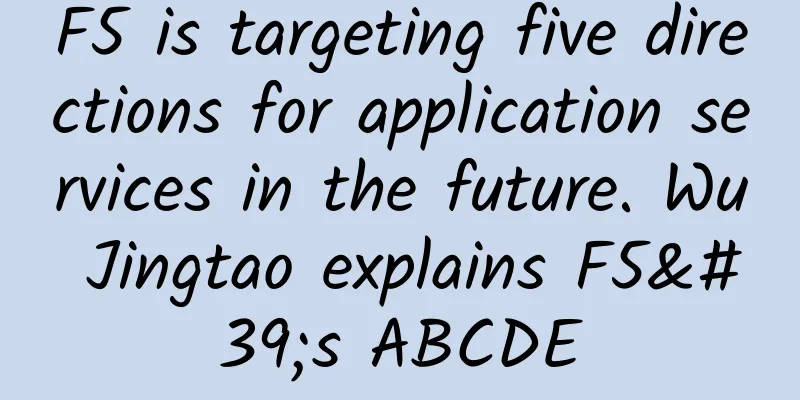Fiber Polarity and Its Role in Switching Technology

|
Before we delve into the world of switching technology, it is necessary to understand the concept of fiber polarity. In simple terms, it refers to the alignment of the fiber cores between interconnect cables and connectors. Unlike traditional copper cables, where electrical signals flow in both directions, fiber optic signals are driven by light pulses and travel unidirectionally. Therefore, maintaining the correct alignment of the optical fiber is critical to ensure that the signal reaches its intended destination accurately. The Basics of Fiber PolarityFiber optic cables are made up of multiple strands, or optical fibers, encased in a protective sheath. Each fiber has a core where light travels and a cladding that reflects light to prevent signal loss. In a typical system, two common types of connectors are used: male connectors (plugs) and female connectors (sockets). Ensuring that these connectors are properly aligned is critical to maintaining the integrity of the optical signal. Key components for fiber polarity
Types of Fiber PolarityTo facilitate standardized connections, TIA/EIA (Telecommunications Industry Association/Electronic Industries Association) defined three main polarity types: straight-through, reverse, and crossover.
Polarity Effects of Fiber Optic SwitchesIn the context of fiber optic network switches, understanding fiber polarity is critical to ensuring proper connectivity and signal transmission between different network devices. Fiber optic switches play a key role in directing data traffic within a network, and proper alignment of the optical fibers is essential for seamless communication. Here is how fiber polarity relates to fiber optic network switches.
The significance of optical fiber polarity in switching technologyNow that we have a basic understanding of fiber polarity, let’s explore its critical role in switching technology.
In data centers, where high-speed and high-density connections are critical, fiber polarity plays a vital role in ensuring seamless communication between network devices. Polarity mismatches can result in signal loss, data corruption, and in some cases, equipment damage. Standardizing polarity configurations within data centers is critical to simplify deployment and maintenance.
Parallel optics is a technology that uses multiple optical fibers to transmit data simultaneously, significantly increasing data transfer rates. In parallel optics applications, such as those found in high-performance computing and supercomputing environments, proper alignment of the fibers is critical. Cross-polarity configurations are often used in parallel optics to optimize data transfer.
As network infrastructure grows and expands, the need for seamless connectivity becomes increasingly important. Fiber polarity becomes a focus during network upgrades or expansions, ensuring new components integrate seamlessly with existing infrastructure. Misaligned polarity can cause network outages, data errors, and increased downtime.
As the demand for high-speed Internet access in residential areas continues to increase, fiber-to-the-home (FTTH) deployments have become commonplace. Fiber polarity is a key consideration in FTTH installations, where ensuring the correct alignment of the optical fiber is essential for reliable and high-speed Internet connections.
Telecommunications networks are the backbone of global communications and rely heavily on optical fiber. Properly aligned polarity is critical to telecommunications networks to ensure that voice, data, and video signals reach their destination without degradation or interruption. Mismatched polarity can lead to communication failures and network inefficiencies. Best Practices for Fiber Polarity ManagementTo ensure effective management of fiber polarity in switching technologies, several best practices should be followed:
SummarizeIn the fast-paced world of technology, where connectivity is king, understanding and managing fiber polarity is critical. Proper alignment of optical fibers ensures that data flows seamlessly through the network, enabling the high-speed, reliable communications required for modern applications. As switching technologies continue to evolve, adhering to fiber polarity standards becomes increasingly important to maintaining efficient and resilient communications networks. By adopting best practices and standards, organizations can navigate the complexities of fiber polarity and ensure their networks remain at the forefront of technological innovation. Frequently asked questionsWhat is fiber optic cable polarity? To ensure accurate signal transmission between connected devices, the arrangement and alignment of individual optical fibers within a fiber optic cable is called cable polarity. In a fiber optic network, maintaining signal integrity, compatibility, and optimized performance depends on proper polarity control. By ensuring smooth and reliable propagation of optical signals throughout the network, signal distortion and loss can be reduced. How does fiber polarity differ from cable polarity? The alignment of the transmit and receive fibers within a fiber optic connection or transceiver ensures correct signal direction during data transmission and is often referred to as "fiber polarity" in fiber optic installations. In contrast, "cable polarity" refers to the way the fibers are arranged inside a fiber optic cable to ensure reliable signal transmission between connected cables and components. Despite the similarities, the two ideas involve different aspects of polarity control in fiber optic systems. Why is documentation critical in fiber network deployment? When it comes to fiber optic network deployment, documentation is crucial because it provides useful details about the network architecture, components, and connections. More precisely, documentation on fiber optic cable polarity provides network engineers and technicians with precise instructions on how to keep fibers, connectors, and devices aligned and connected. By providing a comprehensive reference to understand network topology and connections, it makes troubleshooting, upgrades, and expansions much easier. What common fiber optic terms related to polarity and network documentation should network administrators be familiar with? When dealing with fiber optic networks, network administrators need to be familiar with many concepts related to network documentation and polarity management, such as: Keying Mechanism: A feature of a fiber optic connection that allows for constant polarity configuration by ensuring proper alignment and orientation during the connection process. Patch Cord: A fiber optic cable with a certain polarity configuration used to connect network equipment or patch panels to ensure end-to-end continuity. Optical Time Domain Reflectometer (OTDR): A diagnostic instrument used for analysis and troubleshooting of fiber optic networks to confirm polarity alignment and locate errors or irregularities. TIA/EIA-568: Industry standard that governs the layout, documentation, and construction of fiber-optic networks and other structured cabling systems, ensuring consistency and compatibility between installations. |
<<: What is structured cabling? What are the benefits of structured cabling?
>>: What will the Internet look like in 10 years?
Recommend
Pesyun: 188 yuan/month-8 cores/32GB memory/500G SSD/30M/Los Angeles & Portland data centers
Pesyun (Standard Interconnect) has launched the 2...
The three major operators were forced to delist from the US: the impact was not significant but the intention was obvious
On December 31 last year, the New York Stock Exch...
The future of high-speed connectivity: Embedded non-volatile memory in 5G networks
In the fast-paced world of technology, the demand...
5G backhaul will become the next growth point in the field of optical communications
According to industry insiders, 5G mobile service...
RAKsmart New Year's Big Offer: E3 servers starting at $30/month, new Korean servers, Hong Kong/Japan/US cluster servers, VPS monthly payment starting at $1.99, GPU servers, high-defense servers
RAKsmart has launched a New Year's Big Sale. ...
Borui Data passed the CMMI Level 5 assessment, the first in the domestic APM field
Recently, Borei Data passed the CMMI Level 5 asse...
Challenging the NB-IoT and LoRa market? A new round of competition in the LPWAN field
In recent years, the IoT industry has reached a c...
As technology giants rush to enter the market, what kind of development will the satellite communications field usher in?
In recent years, the global satellite communicat...
Addressing IoT and edge computing security challenges
Edge computing provides computing, storage, and n...
6 small Windows tools that kill a lot of paid software
[[374946]] I am usually a software addict and can...
[11.11] RackNerd: $11/year-1GB/12G SSD/2TB/San Jose/Seattle/Dallas and other data centers
RackNerd has launched this year's Double 11 p...
ITLDC: Unlimited traffic VPS limited time annual payment 40% off €22.98/year, 15 data centers in the United States/Singapore/Netherlands/Ukraine, etc.
ITLDC is currently offering an automatic 40% disc...
What are the characteristics of 5G? A few keywords will help you understand
5G (fifth-generation mobile communication technol...
How to determine whether the protocol is Websocket in Http Header
[[398343]] This article is reprinted from the WeC...
![[5G Encyclopedia] How does 5G implement TDD?](/upload/images/67eb9cae690e9.webp)








